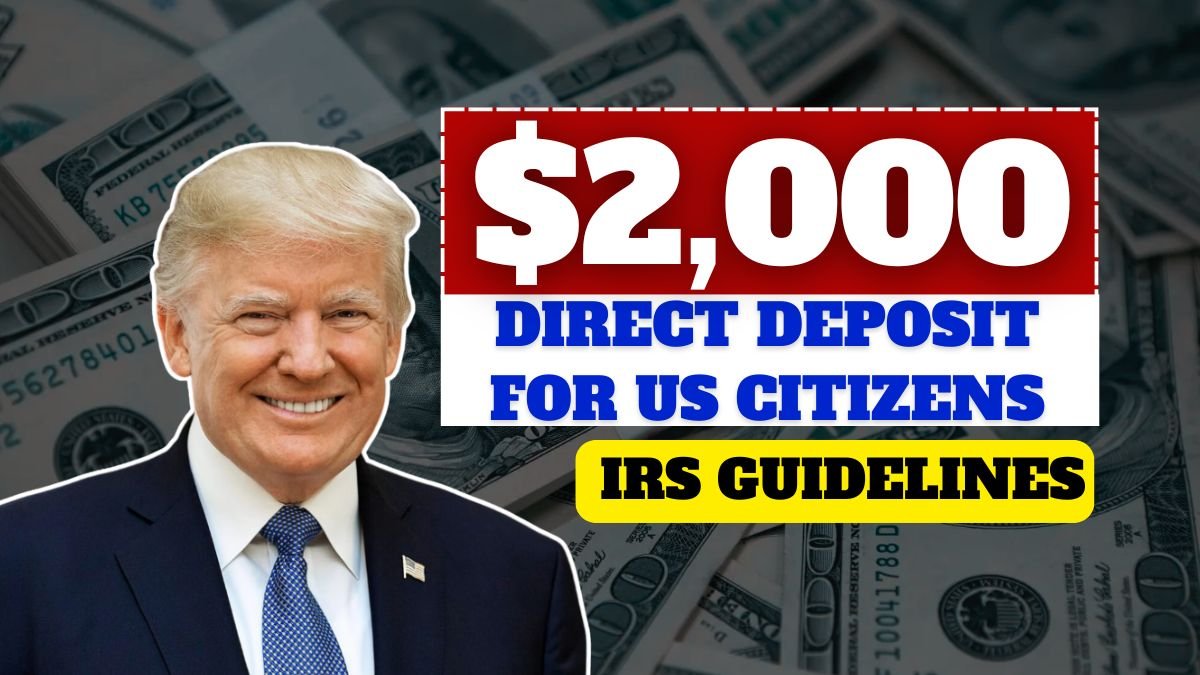As previously reported about relief and financial assistance in the United States, one important item of news has been concerning the government’s $2,000 direct deposit payment. The amount is primarily meant for citizens of America still feeling the effects of recession, unemployment, rising inflation, and a rapidly increasing cost of living. The Internal Revenue Service (IRS) is administering this program as economic relief to the citizen population.
Aim of This Government Plan
The aim of this plan is, as its primary goal, to help low-income or financially troubled post-pandemic citizens benefit from inflation-adjusted livelihoods in the U.S. This will provide temporary respite because these changes in economic demand have increased inflation and cost-of-living levels significantly for many Americans. The direct cash assistance of $2,000 will give temporary relief.
This payment would not only be available to the general public, but also to beneficiaries who receive Social Security, SSI (Supplemental Security Income), SSDI (Social Security Disability Insurance), and Veterans Benefits.
Role and Process of IRS
The IRS’s principal role under this program is to identify all eligible citizens and directly pay them through the Direct Deposit scheme. This is precisely the same method used for previous Stimulus Checks.
Citizens registered within the IRS system will enjoy a seamless payment process, as their funds will be transferred directly to their bank accounts. However, those who have not updated their details must update tax returns or bank information to avoid delays.
Eligibility Criteria for $2,000 Direct Deposit
Under the said plan, not everyone will qualify automatically. The eligibility criteria are as follows:
- Single filers: Income less than $75,000
- Married couples: Combined income less than $150,000
- Head of household: Income limit $112,500
The payment amount will be gradually reduced or not received at all for those earning above these ceilings.
Additionally, individuals must be U.S. citizens or permanent residents and possess a valid Social Security Number (SSN).
Probable Payment Dates
According to the IRS, the $2,000 direct deposit processing may start in November 2025, but states may have different deadlines based on their banking systems.
Phase 1: Mid-November payments will go to people with current information in the IRS system who previously participated in other stimulus programs.
Phase 2: Early December payments will go to recently updated or newly qualified applicants.
According to the IRS, payments can be made by Direct Deposit, Paper Check, or Prepaid Debit Card, depending on the recipient’s preference.
Application Process and Required Documentation
If you have already filed a tax return with the IRS, you do not need to apply separately.
New applicants must:
- Login to the IRS portal and verify identity.
- Enter Social Security Number, Bank Account Details, and Tax Filing Information.
- File a 2024 tax return if you haven’t done so already.
The IRS will issue an email confirmation after submission, informing applicants about their application status.
Which Group Will Get Priority for This Payment?
The following groups will receive priority payments under this relief plan:
- Older recipients receiving Social Security or SSI payments
- Low-income families earning less than $40,000 annually
- Disabled individuals receiving SSDI benefits
- Veterans suffering from disability or financial hardship
These groups will receive quick financial assistance to ensure immediate relief.
Government Objective and Long-Term Impact
The main objective of this U.S. government initiative is to provide immediate financial relief and stimulate economic activity.
With increased consumer spending, demand will rise, which can significantly boost small businesses.
This initiative is also expected to help families meet rent, education, and medical expenses, promoting economic equality across communities.
IRS Key Warning
The IRS has issued a warning to all citizens to beware of fraudulent calls, emails, or websites.
Scammers often pose as IRS representatives to collect personal or bank details. The IRS clarified that it never requests personal information via phone or email for payment processing.
Citizens should only use the official IRS website for updates and applications.
Other Future Economic Relief Programs
The $2,000 direct deposit plan is expected to be the first of several upcoming economic relief efforts.
The government is also planning tax credits, child benefits, and Social Security adjustments in the future.
By 2026, there may be a proposal to introduce automatic quarterly direct-relief payments, further strengthening America’s economic safety net.
Citizen Reactions
Public responses have been mixed. Some view the plan as a positive step toward economic recovery, while others believe it offers only short-term relief.
Still, most agree that this initiative will temporarily ease financial pressure and support low-income households struggling with inflation.
Conclusions
The $2,000 direct deposit program is set to be a lifeline for millions of Americans, addressing both immediate financial needs and long-term economic stability.
This IRS–U.S. government initiative aims to increase purchasing power, reduce poverty rates, and strengthen the national economy.
If you meet the eligibility criteria, log in to your IRS account and ensure your details are up to date to receive the payment without delay.
This program represents a crucial opportunity for individuals striving to improve their financial well-being and prepare for a more secure future.
FAQs
Q1. Will every U.S. citizen receive the $2,000 direct deposit?
No, only those citizens who meet the income and eligibility requirements will receive the payment.
Q2. When will the payment start?
According to the IRS, the $2,000 direct deposits will begin rolling out from November 2025.
Q3. Is it necessary to apply on the IRS website?
If your tax return is already filed, you don’t need to apply; otherwise, register through the IRS portal.
